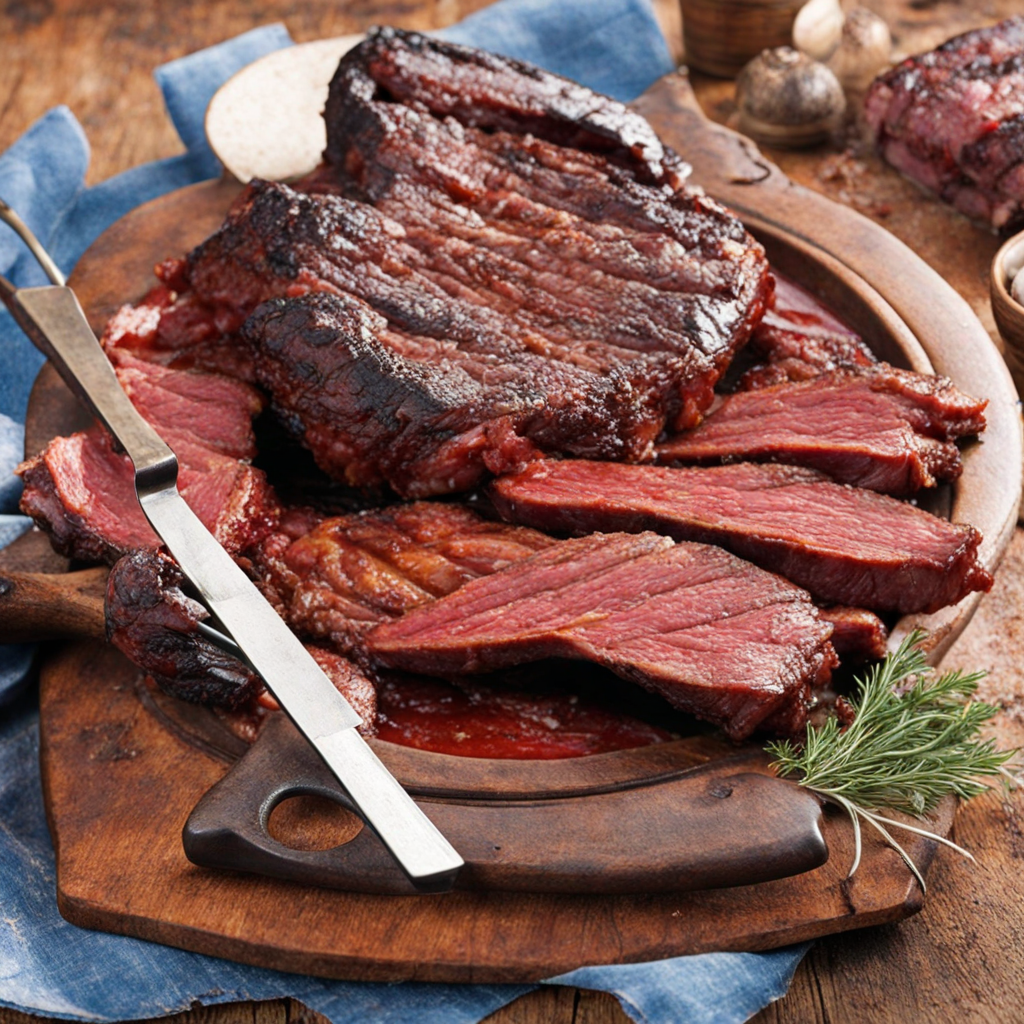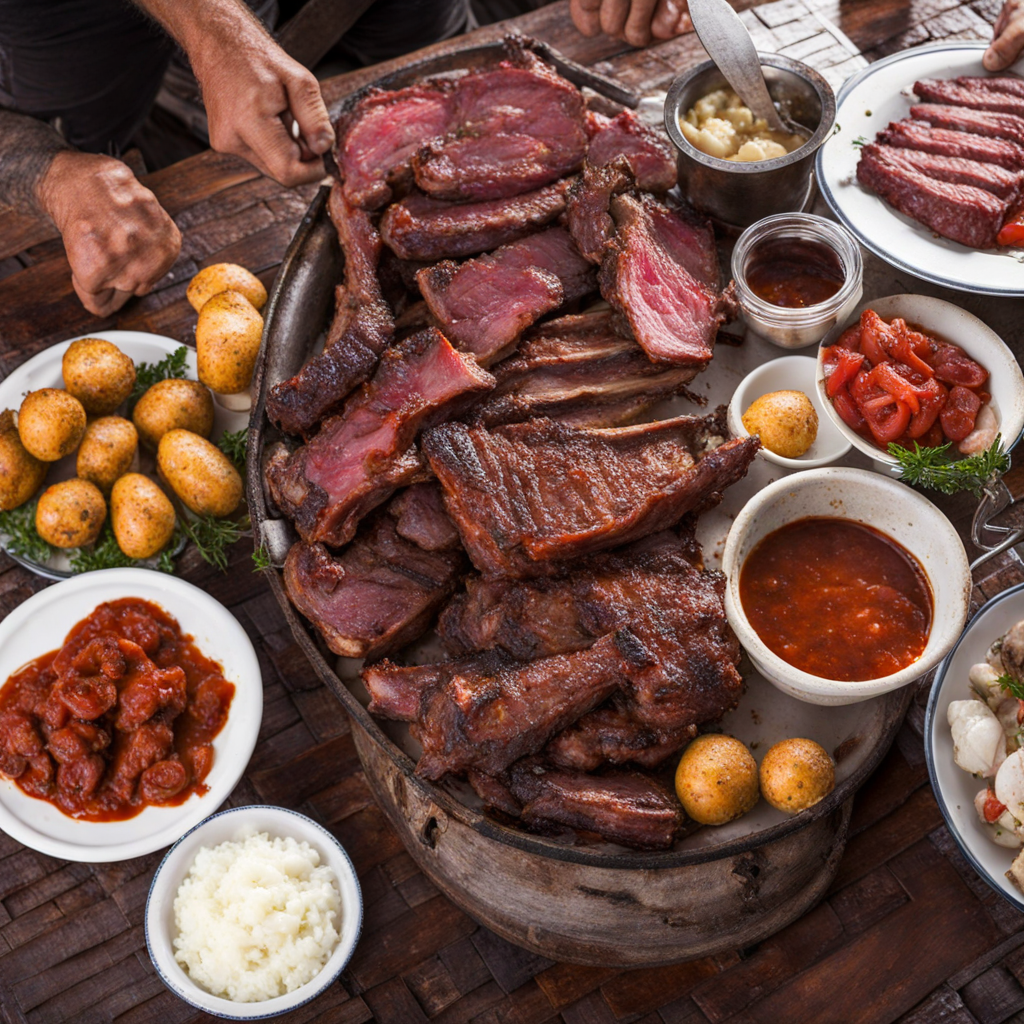Milanesa
Milanesa is a beloved dish in Uruguay, characterized by its simplicity and rich flavor. Essentially, it consists of a thin slice of meat, typically beef or chicken, that is seasoned, breaded, and then fried to a crispy golden perfection. The coating usually involves dipping the meat in a mixture of beaten eggs and breadcrumbs, which gives it that satisfying crunch upon biting into it. This technique of breading and frying is reminiscent of similar dishes found in various Latin American countries, yet each region adds its unique twist to the preparation and accompanying sides. In Uruguay, milanesa is often served with a side of mashed potatoes, salad, or even topped with a fried egg, making it a hearty meal that appeals to a wide range of tastes. The dish can also be enjoyed in a sandwich form, known as 'milanesa al pan', where the breaded meat is placed between crusty bread, garnished with fresh vegetables, and drizzled with sauces like chimichurri or mayonnaise. This versatility allows for a variety of dining experiences, whether at a casual family gathering or a more formal dinner. One of the most delightful aspects of milanesa is its ability to absorb flavors, making it a canvas for creativity. Chefs might infuse the breading with herbs and spices, or serve it alongside unique sauces that enhance its taste. Additionally, vegetarian versions using eggplant or tofu have emerged, catering to those looking for plant-based options. Overall, milanesa is not just a dish; it is a culinary experience that reflects the warmth and hospitality of Uruguayan culture, inviting anyone to savor its comforting flavors.
How It Became This Dish
The History of Milanesa in Uruguay: A Cultural Culinary Journey Milanesa, a beloved dish in Uruguay, is a breaded and fried meat cutlet that has transcended its humble origins to become a staple in Uruguayan cuisine. While it is enjoyed throughout Latin America and even in parts of Europe, its unique history in Uruguay reflects a rich tapestry of cultural influences, social significance, and culinary evolution. #### Origins: European Influences The roots of Milanesa can be traced back to the traditional Italian dish known as "Cotoletta alla Milanese," which originated in Milan, Italy, during the 19th century. This dish typically consists of veal cutlets that are breaded and fried, often served with a wedge of lemon. As waves of Italian immigrants made their way to the Americas in the late 19th and early 20th centuries, they brought with them their culinary traditions, including the beloved cotoletta. In the context of Uruguay, which saw a significant influx of Italian immigrants during this period, the cotoletta underwent a transformation. The dish adapted to local tastes and available ingredients, leading to the creation of the milanesa as it is known today. Instead of veal, Uruguayan milanesa is often made from beef, chicken, or pork, reflecting the country's rich cattle ranching heritage and the accessibility of these meats. #### Cultural Significance Milanesa is more than just a meal in Uruguay; it is a symbol of comfort and tradition. It embodies the melding of European culinary practices with local flavors and ingredients, making it a quintessential example of Uruguayan gastronomy. The dish is often associated with family gatherings and celebrations, serving as a reminder of the importance of shared meals in Uruguayan culture. In many households, preparing milanesa is a cherished ritual. Families often gather to help in the preparation, which may include seasoning the meat, dipping it in egg and breadcrumbs, and frying it to perfection. The process fosters a sense of togetherness, reflecting the communal nature of Uruguayan society. It is not uncommon for milanesa to be served at birthday parties, Sunday dinners, or casual get-togethers, earning it a special place in the hearts and stomachs of many Uruguayans. #### The Evolution of Milanesa Over time, the milanesa has evolved, both in terms of preparation methods and variations. The classic milanesa consists of thinly sliced meat that is pounded to tenderize it, seasoned, and then coated in flour, egg, and breadcrumbs before being fried until golden brown. However, as culinary trends have changed, so too has the dish. In contemporary Uruguay, you might find variations like "milanesa a la napolitana," which is a milanesa topped with ham and cheese, and sometimes even a fried egg. This variant showcases the influence of different culinary traditions, blending the milanesa with local favorites such as pizza and sandwiches. The creativity surrounding milanesa has led to a proliferation of toppings, sides, and accompaniments, reflecting the diverse palates found within the country. Another modern twist on milanesa is the introduction of healthier cooking methods. While traditionally fried, many households now opt for baking or air-frying as a way to reduce oil consumption without sacrificing flavor. This shift reflects a growing awareness of health and nutrition, demonstrating how traditional dishes can adapt to contemporary lifestyles. #### Milanesa in the Gastronomic Landscape Milanesa is not only a home-cooked favorite; it has also found its place in Uruguay's vibrant restaurant scene. From casual eateries to upscale dining establishments, milanesa is featured on many menus, often accompanied by a variety of sides such as mashed potatoes, French fries, or a simple salad. It is also common to find milanesa sandwiched between two slices of bread, creating a beloved street food known as the "milanesa al pan." The dish's popularity has led to the establishment of specialized milanesa restaurants, where patrons can choose from an extensive array of meats, coatings, and toppings. These establishments celebrate the dish's cultural significance while allowing for culinary experimentation, attracting both locals and tourists eager to experience authentic Uruguayan cuisine. #### Regional Variations and Comparisons While milanesa is a staple across Uruguay, it is also enjoyed in neighboring countries, each with its own interpretation. In Argentina, for instance, milanesa is similarly popular, yet it often features larger cutlets and a greater emphasis on flavoring the breading. In Brazil, a similar dish called "empanada" incorporates different spices and ingredients, showcasing the regional variations that exist across Latin America. Despite these differences, the core essence of milanesa—the concept of a breaded, fried meat cutlet—remains consistent. This universality speaks to the adaptability of the dish and its ability to resonate with diverse culinary traditions. #### Conclusion: A Dish of Identity Milanesa in Uruguay is more than just a meal; it represents a fusion of cultural influences, a celebration of family, and an enduring symbol of national identity. As Uruguay continues to evolve, so too does its culinary landscape, but the milanesa remains a steadfast favorite, a dish that evokes nostalgia and comfort. Through its journey from Italian kitchens to Uruguayan tables, milanesa has woven itself into the fabric of the nation’s gastronomy. Whether enjoyed at home or in a bustling restaurant, this dish reflects the history, culture, and passion of the Uruguayan people, making it an integral part of their culinary heritage. As Uruguayans continue to cherish and innovate upon this classic dish, the milanesa stands as a testament to the power of food to unite, comfort, and inspire.
You may like
Discover local flavors from Uruguay







